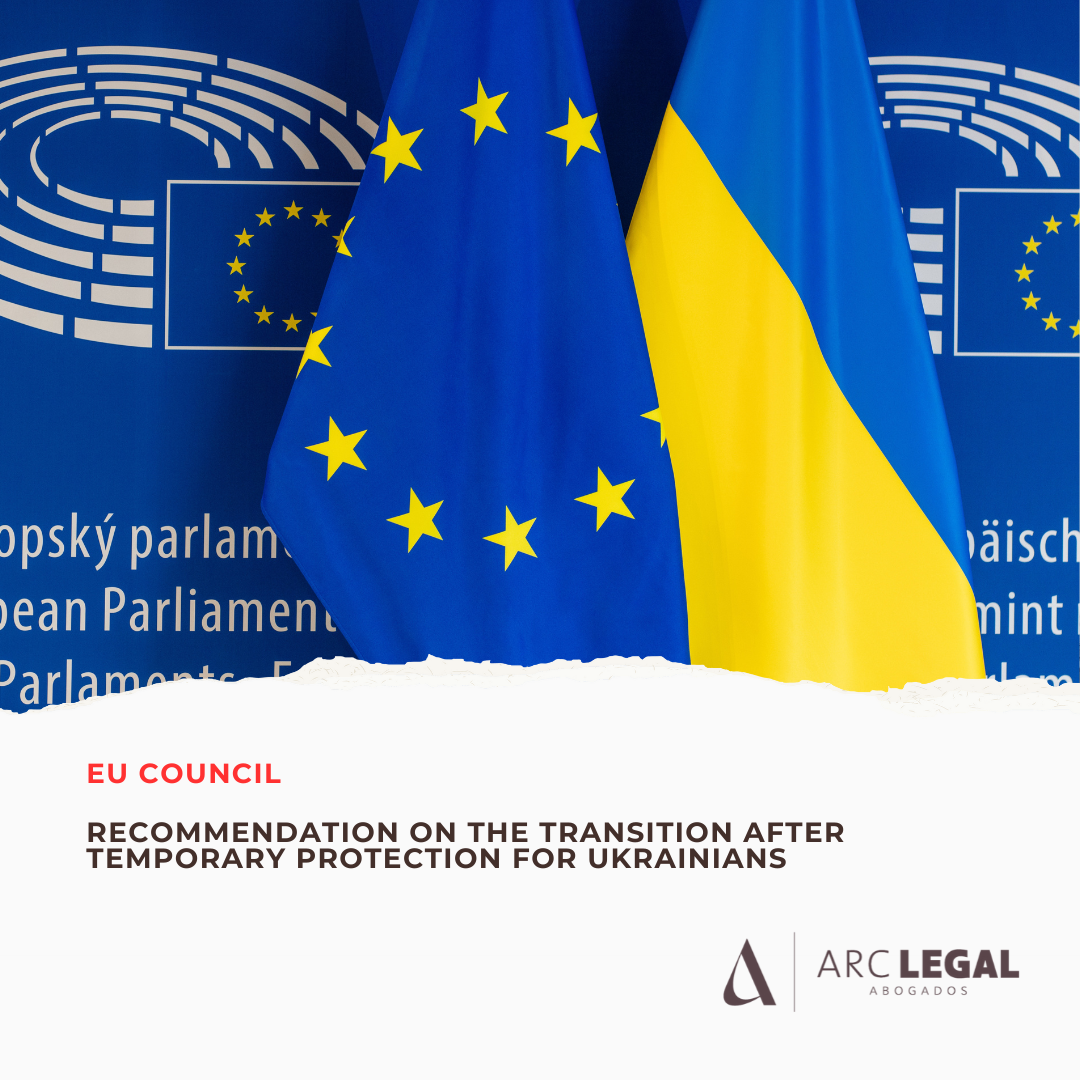The Council of the European Union has adopted a Recommendation establishing a coordinated approach to the end of temporary protection granted to people displaced by the war in Ukraine. This protection, activated in March 2022 after the Russian invasion and extended several times, will remain in force until 4 March 2027.
🚨 On 15 July 2025, the Council of the European Union adopted Implementing Decision (EU) 2025/1460, which extends temporary protection for displaced persons from Ukraine until 4 March 2027. This measure ensures the continuity of the regime launched in March 2022 under Directive 2001/55/EC.
More details in our article: Extension of temporary protection for displaced persons from Ukraine until March 2027
The new text acknowledges that temporary protection is a provisional measure. Therefore, Member States must prepare a gradual, sustainable, and coordinated transition towards other legal statuses or, where appropriate, towards return to Ukraine, always considering the individual circumstances of beneficiaries and Ukraine’s capacity to receive them.
You can access the full text of the Council Recommendation published in the Official Journal of the European Union here:
⏺️ Key measures included in the Recommendation
Access to other national or EU legal statuses
Member States must facilitate the transition of beneficiaries of temporary protection to EU or national residence permits based on employment, studies, family reasons, or specific programmes, when conditions are met. They may also apply for authorisations under EU directives such as the Students and Researchers Directive, the EU Blue Card for highly qualified employment, or the Single Permit Directive.
Exploratory visits to Ukraine
Voluntary and self-funded exploratory visits will be encouraged so that people can assess conditions for return on the ground, under parameters coordinated between Member States.
Voluntary return programmes
Specific voluntary return programmes will be set up, coordinated with Ukrainian authorities, with an initial one-year departure period. These programmes will prioritise reintegration into local communities, rather than individual aid packages, and may be financed through the Asylum, Migration and Integration Fund (AMIF).
Residence for people with special needs and families with schoolchildren
Member States must provide temporary solutions for people with special needs that Ukraine cannot yet address, as well as for families with school-aged children, allowing them to complete the school year in the host Member State.
Clear information and coordinated campaigns
Member States must strengthen transparent communication about available options, the future of protection, and return programmes, using national contact points, unity centres, and information campaigns.
Coordination and monitoring
Member States must intensify data exchange on beneficiaries and transitions to other statuses, as well as reinforce cooperation with Ukrainian authorities and EU bodies.
⏺️ Impact on beneficiaries and next steps
This Recommendation marks a key step in preparing for the post-March 2027 scenario. For those already integrated through work or studies in Europe, new pathways open towards more stable residence statuses. For those considering a return to Ukraine, voluntary return programmes with reintegration support are being designed.
The message is clear: the transition will not be abrupt but flexible and adapted to each individual case, seeking to balance the protection of displaced persons with Ukraine’s capacity to rebuild its society.
⏺️ Legal advice for beneficiaries of temporary protection
At ARC Legal, we assist those currently under temporary protection in Spain who wish to explore their future options: transition to stable residence permits, voluntary return programmes, or rights under EU law. If you need legal guidance, contact us — we can help you identify the best path according to your personal situation.
Related articles
- Over 326,000 Ukrainians hold valid residence permits in Spain
- Ukrainian Refugees in the EU: 4.34 Million Under Temporary Protection as of July 2025
- How long does it take? Immigration cases processing times in Madrid – September 2025
¿Quieres leer este artículo en español 🇪🇸? Enlace: Transición tras la protección temporal de Ucrania: medidas de la UE para 2027
The information in this article is for general guidance only and does not constitute legal advice. While we aim to provide accurate and up-to-date information, immigration regulations are subject to change and interpretation by the relevant authorities. For personalised and updated legal support, we recommend consulting an immigration lawyer.
